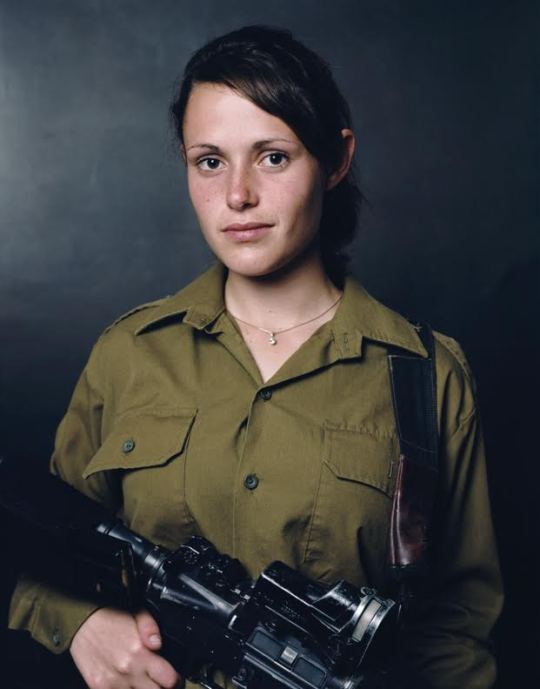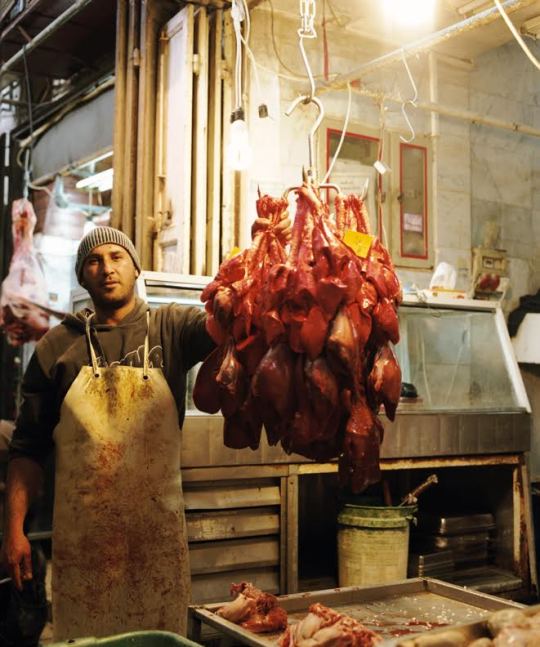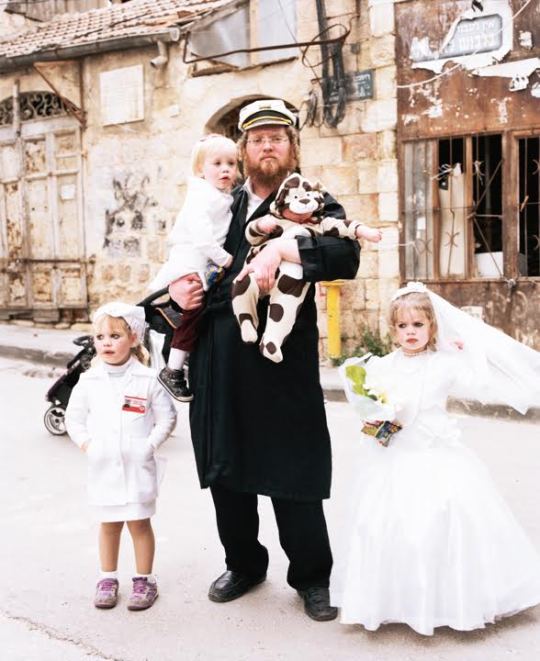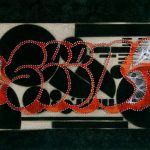Fellows at 30 / Fiscal Sponsorship: Andres Serrano
“In answer to your question, how do artists create space for discourse, I’m still trying to figure it out.”
Andres Serrano is a 1987 NYSCA/NYFA Artist Fellow in Photography and his recently released book, Salvation: The Holy Land, as well the work “Residents of New York,” are both fiscally sponsored by NYFA. Serrano, born in 1950 in New York, is one of the most celebrated representatives of international contemporary photography and art. Religion, sexuality, and death are pervasive elements of his oeuvre.
Salvation depicts photographs from a visit to Israel. Using a Mamiya RB67 camera, he approached the subject of religious faith via the landscape and the people. He visited sacred sites, Bethlehem, Ramallah, Galilee, and the Dead Sea, coming closer to people step by step, picture by picture, following them through their everyday lives and celebrations, to ultimately depict traces of the identity of an entire nation in their faces in intense studio photographs. This striking testimony was captured on film shortly before the resurgence of the Middle East conflict.
Get your copy wherever books are sold! If you’re an Amazon shopper, use Amazon Smile and support NYFA without making a donation.
NYFA: When you applied for NYFA Fiscal Sponsorship, you were an artist with an established career. Why was it the right time to apply for fiscal sponsorship for your projects, “Residents of New York” and Salvation, and what made NYFA the correct fit?
Andres Serrano: Even an established artist needs help sometimes, particularly with projects that are not necessarily intended for the marketplace. I was approached by More Art, an organization that works with artists doing public projects, to do a public installation. In October of 2013, as Mayor Bloomberg was leaving office, I began to see more homeless people than ever on the streets of New York City. I was particularly drawn to the signs the homeless use to ask for money. It gave me an idea to do a conceptual piece whereby I went around buying the signs. I spent the entire month walking the streets buying signs, walking from 5 to 6 hours a day and, in the end, up to 12. I paid everyone $20 for their sign. I bought over two hundred signs and made a video called “Sign of The Times.”
Then, as I started to think about what I would do for More Art, it made sense for me to continue working with the people on the streets, especially when the location for my project would be the West 4th Street subway station. “I’m sick of looking at all these ads trying to sell me something,” I thought to myself. “I want to put up pictures of homeless people instead.” So I set about taking 4×5 studio-like portraits of homeless people on the streets of New York City. Naming them “homeless” was a cliche I wanted to avoid, so I called them “Residents of New York.” It was important for me to acknowledge the homeless as residents of the city, because they are, and to put them up where everyone could see them if they chose to. “The Residents of New York” was well received and got not only local coverage but international press as well.
A year later, when I was asked to participate in the Havana Biennale, I decided to show “The Residents of New York.” I like the irony of showing homeless people in New York City, a city everyone looks up to, in a nation where there are no homeless. Cuba may have a a lot of problems, but homelessness is not one of them. There are no homeless on the streets of Havana because even the poor have a roof over their heads in Cuba.
I applied for NYFA Fiscal Sponsorship for support in bringing “The Residents of New York” to Cuba. As we did in New York City, we printed and exhibited them as mural-sized posters rather than as framed photographs.
Immediately after finishing “The Residents of New York,” I flew to Israel. I had been invited by the Jerusalem Foundation and the Musrara School of Photography to do a project in Israel.
The day after arriving, I began work photographing everything in sight. I photographed Israelis, Christians, Hassids, Orthodox, Palestinians, Arabs, Bedouins. In addition to spending a lot of time shooting the Old City at night with very long exposures, I also travelled to Bethlehem, Ramallah, Hebron, and the Dead Sea, taking not only portraits but landscapes as well. After six weeks, I had more than enough pictures for a book. Thanks to NYFA, the book, Salvation: The Holy Land, was published.
As a New York artist doing a project based in New York City, it made sense to apply to NYFA Fiscal Sponsorship. Unlike many organizations who don’t practice what they preach, NYFA has always given a helping hand to New York artists when they need it. I’m very happy and proud to say NYFA has supported me in my time of need.

NYFA: In 1987 you received a NYSCA/NYFA Artist Fellowship in Photography. Can you recall what you did with that support?
AS: I used it to live on. At the time, I was a young struggling artist married to Julie Ault, a founding member of Group Material, an organization that mounted exhibitions on social issues of cultural and political significance. Julie told me that I should quit my job—I was a laborer with a construction company—and devote myself to doing my art work, and we would survive on her job at an answering service.
The NYSCA/NYFA grant couldn’t have come at a better time. We were dead broke. I felt like I had won the lottery! We lived on it for a long time.
NYFA: Photographic techniques and technologies have ‘evolved’ greatly since 1987. How have these changes affected your work and process? What shifts (if any) have influenced your understanding of images, for example, the ease of producing digital images?
AS: One of the big differences between photographic technique and technology, then and now, is that it was all film. Although I have never gone into a dark room, I’ve always seen myself as an artist rather than a photographer, and never had the desire to print my work or explore the technical aspects of photography. I still use film. In that respect, the prints and printing techniques have changed, but the original way of creating the image has remained the same. The art changes, but the artist doesn’t.
NYFA: As a native New Yorker, can you comment on how how the city has changed for artists? What future do you see for New York City and the arts?
AS: I think there was a time when art, and many artists, were removed from the “art world.“ Yes, there was Warhol, there was Castelli, there were superstars and big galleries, but there were also millions of artists who weren’t thinking about getting into a gallery but only thinking about making their work. And it was often work with a social conscience looking to explore the issues that concerned them.
I see a dark future ahead of us. There can be no peace or prosperity in a world with so much inequity. When so many are disenfranchised and disempowered, economically and politically, there can be no peace. As the numbers grow, so does the dissatisfaction and disappointment. It’s not hard to see why there’s so much political unrest. The classes are divided by race, money, and fear.
It’s not an overnight problem but one that has festered for decades. All of the people can’t be happy all the time and that’s the problem. We have more unhappy people than ever and having the latest iPhone isn’t going to cut it.

NYFA: Etiquette suggests religion and politics are taboo topics to discuss at a dinner party or around the office, but these issues are essential to understanding what it means to be human. Artists often take the blame for addressing controversial topics and this upset can turn into hateful criticism and loss of funding. How have you coped with these kinds of responses to your work? Why does disagreement make us so uncomfortable? How do artists create space for discourse?
AS: I think a lot of etiquette has been thrown out the window as of late. These taboo subjects you mention are not so taboo anymore (depending on whose table you’re sitting at). In fact, the talk gets even racier when you leave the room. It’s never been my intent to be controversial or contrary, I just am. It’s not easy to hear people criticize you, especially when they’re wrong about you. But if you’re going to stay in the kitchen, you gotta take the heat. What bothers me most about my standing as an artist in America is that I’m barely standing. In the last twenty years, I’ve had more than a dozen major museum solo exhibitions in Europe. I just had my biggest exhibition ever at the Royal Museum of Belgium in Brussels. In October, I’ll show my latest work, “Torture,” at Void in Northern Ireland, and in November I’ll have a big exhibition at the Maison Européenne de la Photographie in Paris. By contrast, I’ve only had one museum show in America, more than twenty years ago. I can’t say my work is censored in America, it’s just not shown. Not being invited is a form of censorship. I’ve never even been invited to be in the Whitney Biennial. Sure, I’ve been in a couple of group exhibitions at the Whitney, but going in the back door is not the same as going in the front.
In answer to your question, how do artists create space for discourse, I’m still trying to figure it out.

NYFA: Amidst this tumultuous political season, why did you decide to exhibit “Donald Trump,” the 2004 photograph from your “America” series, at the first artist-run super PAC For Freedoms?
AS: “America” was my response to September 11. I felt we had been attacked as the enemy, and I wanted to show who the enemy is.
I started with the symbols of September 11—an airline pilot, a postal worker, an FBI agent in a Hazmat suit, two firefighters who’d been digging through rubble at Ground Zero for months—and then went on to photograph people from all walks of life, the poor, the rich, the middle-class, the underclass, the well-known, and the unknown. I spent three years working on it and did over a hundred portraits, Donald Trump being one of them. It seems like the right time to show it. I hate to say I’m ahead of my time, but sometimes I am.
NYFA: What are you working on now?
AS: Nothing. But I want to write my memoirs soon. Sometimes, I wish I was a political pundit, so I could just run my mouth off on television and forget about making art.
The NYSCA/NYFA Artist Fellowship Program awards $7,000 cash grants to artists living in New York State. This year marks the 30th anniversary of the program, and NYFA is celebrating with events and online content. Be sure to follow NYFA on Twitter and Facebook for the latest updates.
NYFA’s Fiscal Sponsorship program provides individual artists and emerging arts organizations in all disciplines with the ability to raise funds using NYFA’s tax-exempt status as a 501(c )(3)-classified organization. The next deadlines for NYFA Fiscal Sponsorship are September 30 and December 31.
All images, from top, courtesy of Andres Serrano: Senior Sister Ekaterina. Alexander Nevsky Church, Jerusalem; Noga Moscowitz; Meir, Meat Shop Owner. Old City of Jerusalem; Dressed up for Purim, Mea Shearim.





